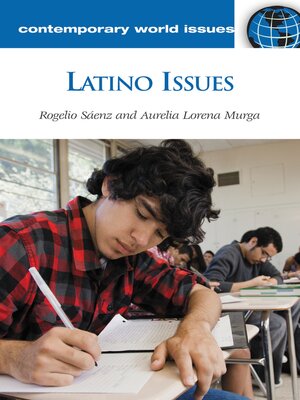
Sign up to save your library
With an OverDrive account, you can save your favorite libraries for at-a-glance information about availability. Find out more about OverDrive accounts.
Find this title in Libby, the library reading app by OverDrive.



Search for a digital library with this title
Title found at these libraries:
| Library Name | Distance |
|---|---|
| Loading... |
This book provides a lively understanding of the growing Latina/o population in the United States, highlights the problems that confront this ethnic group, and discusses proposed solutions to these issues.
The groups that comprise the Latina/o population differ with respect to histories, length of residence in the United States, mode in which they originally came to this country, and trajectory of integration. Latinos in America: A Reference Handbook provides a comprehensive overview of Latina/o experiences in the United States from historical and contemporary perspectives, illustrating the diversity of this disparate population.
The handbook covers numerous aspects of Latino life in the United States, engaging readers in current problems and controversies involving the Latino population and suggesting solutions. Profiles of prominent Latina/os are included, as is information on legal/illegal immigration, bilingual education, affirmative action, dual citizenship, and assimilation—all of which will prove invaluable to students, as well as to policymakers, educators, and other community leaders interested in improving the lives of Latinos within our borders.
The groups that comprise the Latina/o population differ with respect to histories, length of residence in the United States, mode in which they originally came to this country, and trajectory of integration. Latinos in America: A Reference Handbook provides a comprehensive overview of Latina/o experiences in the United States from historical and contemporary perspectives, illustrating the diversity of this disparate population.
The handbook covers numerous aspects of Latino life in the United States, engaging readers in current problems and controversies involving the Latino population and suggesting solutions. Profiles of prominent Latina/os are included, as is information on legal/illegal immigration, bilingual education, affirmative action, dual citizenship, and assimilation—all of which will prove invaluable to students, as well as to policymakers, educators, and other community leaders interested in improving the lives of Latinos within our borders.







